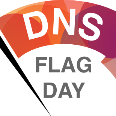The Nationaal Cyber Security Centrum (NCSC) has informed us that as of 1 February 2019 a change will be made in the way in which domain names are handled on the internet.
Due to this change, it may be that certain sites outside the university are no longer accessible. The administrators of these sites have not set up their systems in accordance with the applicable standards. We will not be able to do anything about this but hope the relevant administrators adjust their servers in time.
The university's servers have been tested and comply with the standards. There is therefore no danger that the websites of the university will no longer be accessible from 1 February, or that no more mail will be received.
Technical explanation
The Internet uses the Domain Name System (DNS) to resolve host names to IP addresses. Standard DNS traffic is limited in the design to a maximum message size of 512 bytes. With the growth of the internet, the need arose for a broader application of DNS. Because it turned out that those 512 bytes were not sufficient, Extension mechanisms for DNS (EDNS) was developed. However, not every DNS server responds correctly to EDNS messages. The result is a slower working internet, because answers to DNS requests are not forthcoming. Because this also disrupts the mutual traffic between DNS servers, several suppliers of DNS software have started developing workarounds to deal with these incorrectly responding DNS servers.
Because these workarounds do not appear to be a solution to the actual problem and hinder the further development of DNS, a group of Internet organizations has decided to remove these workarounds on 1 February 2019 and to consider incorrectly responding DNS servers as 'dead'. This obviously has negative consequences for the proper functioning of the domains on that 'dead' DNS server.






